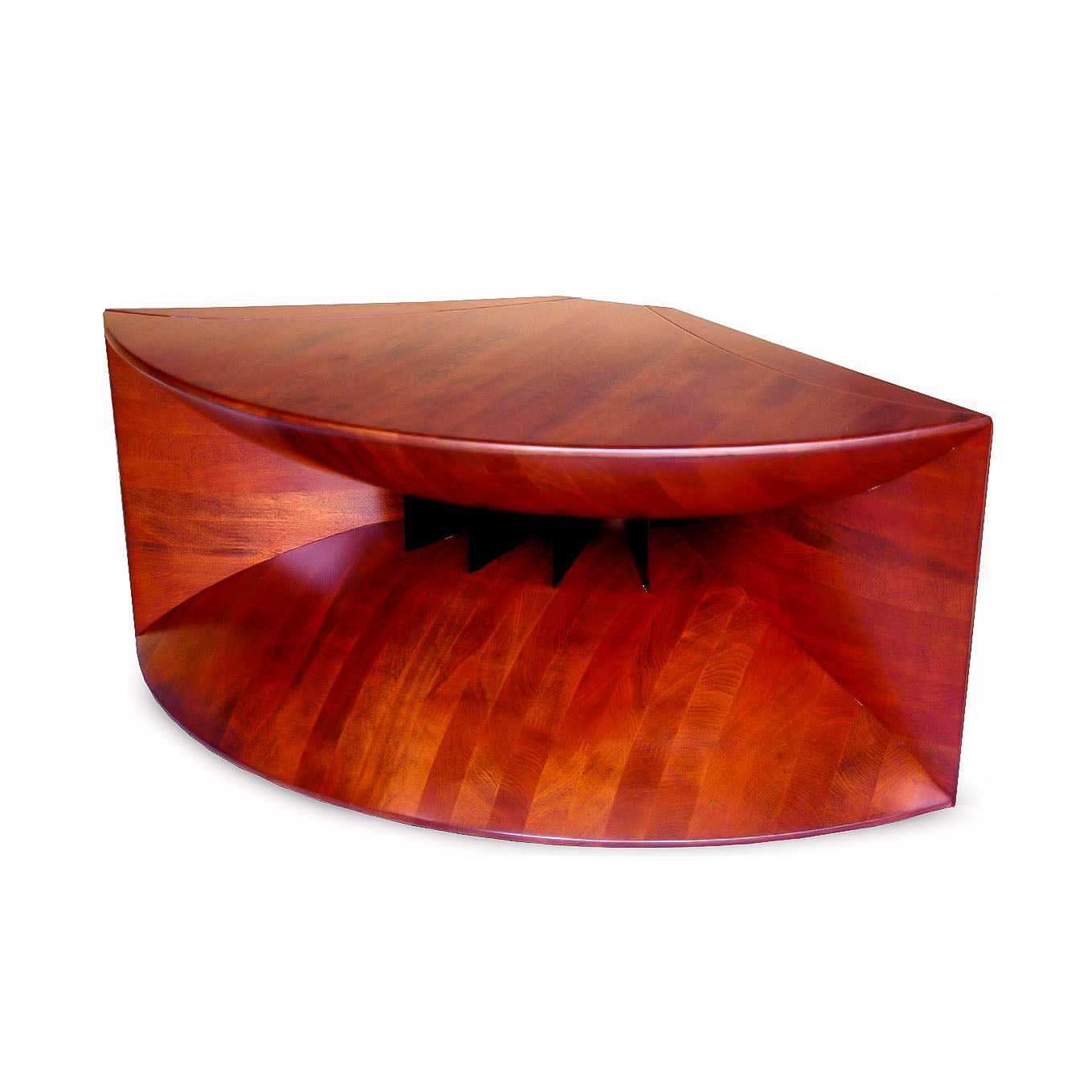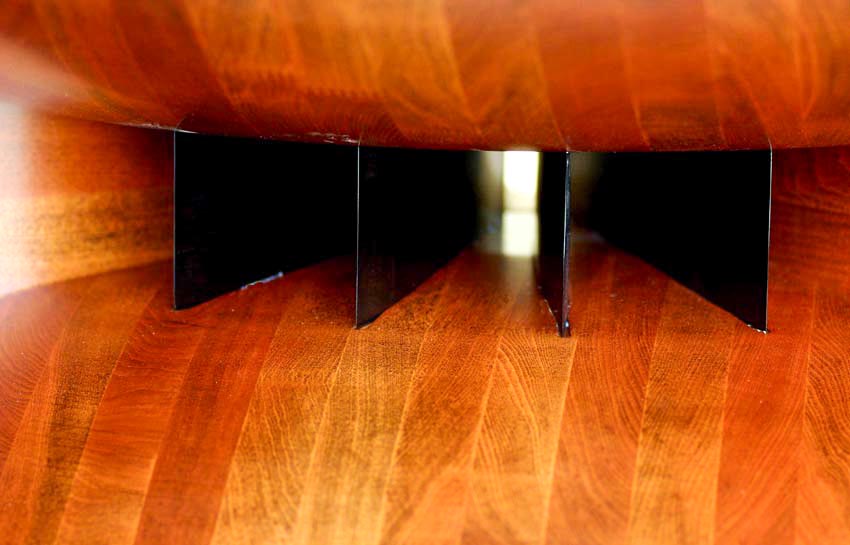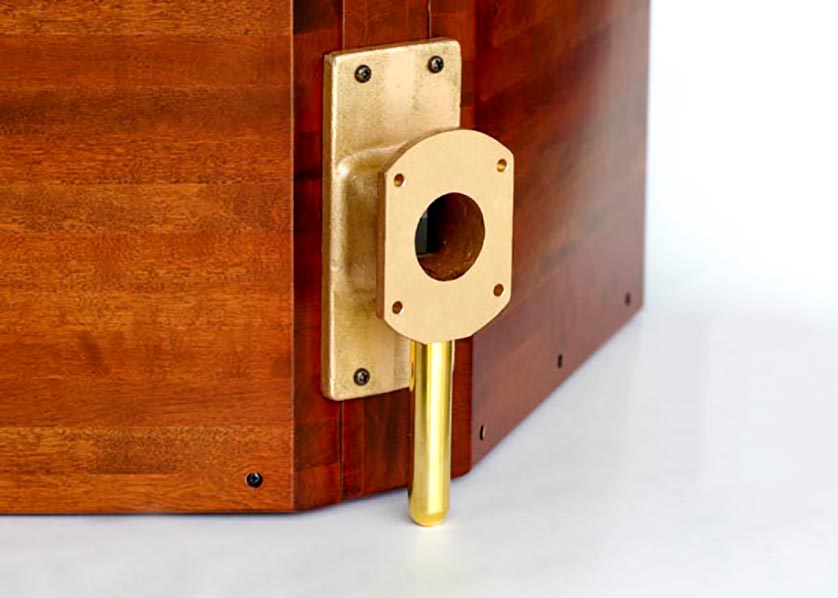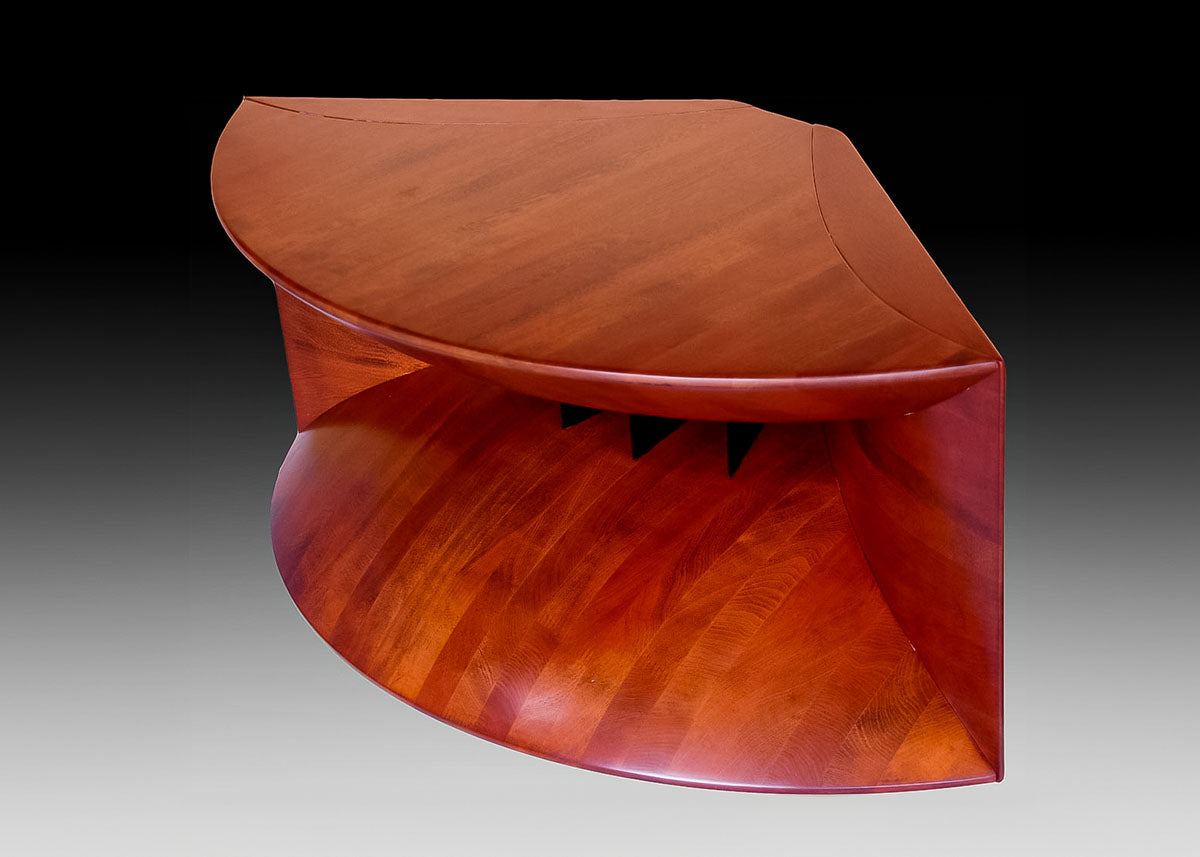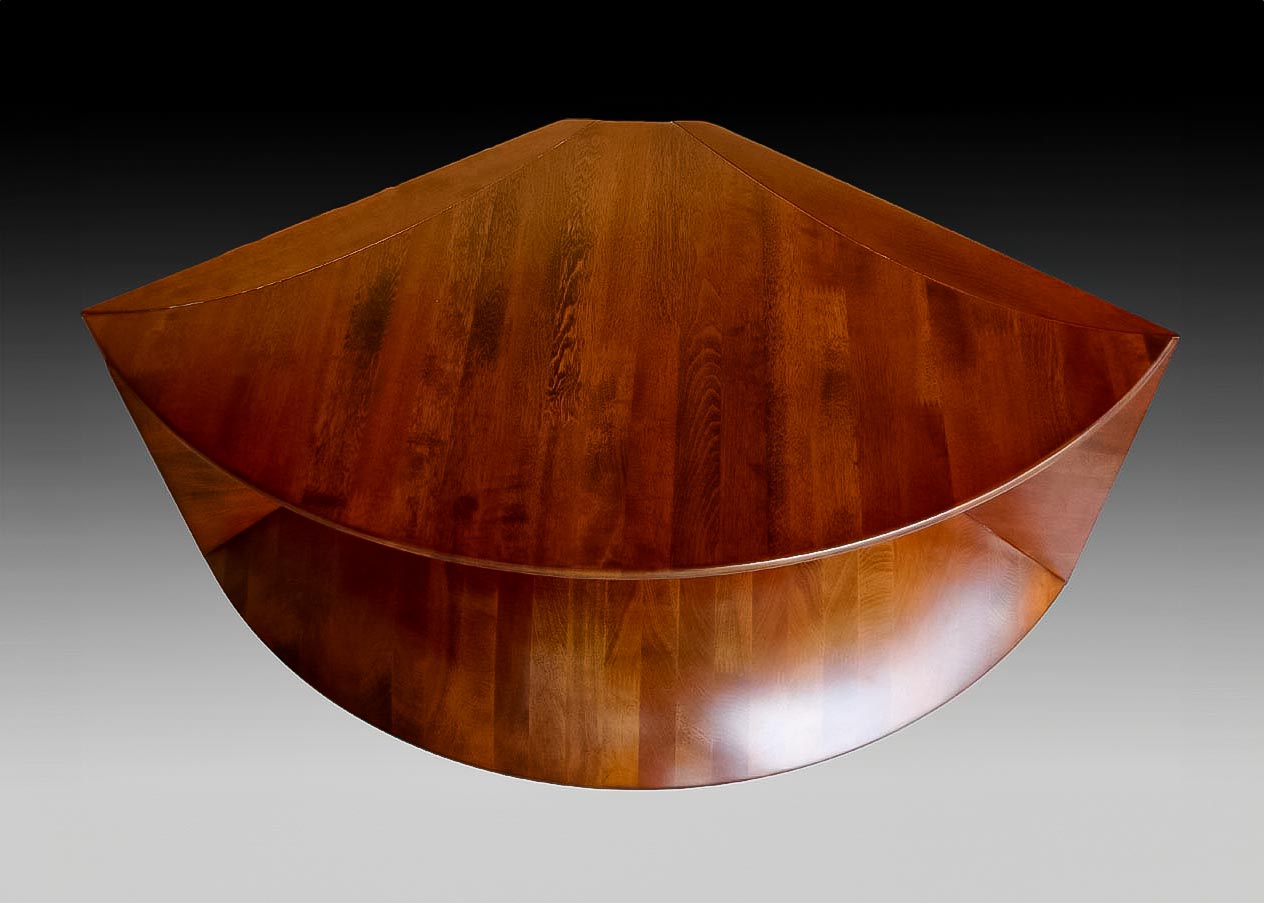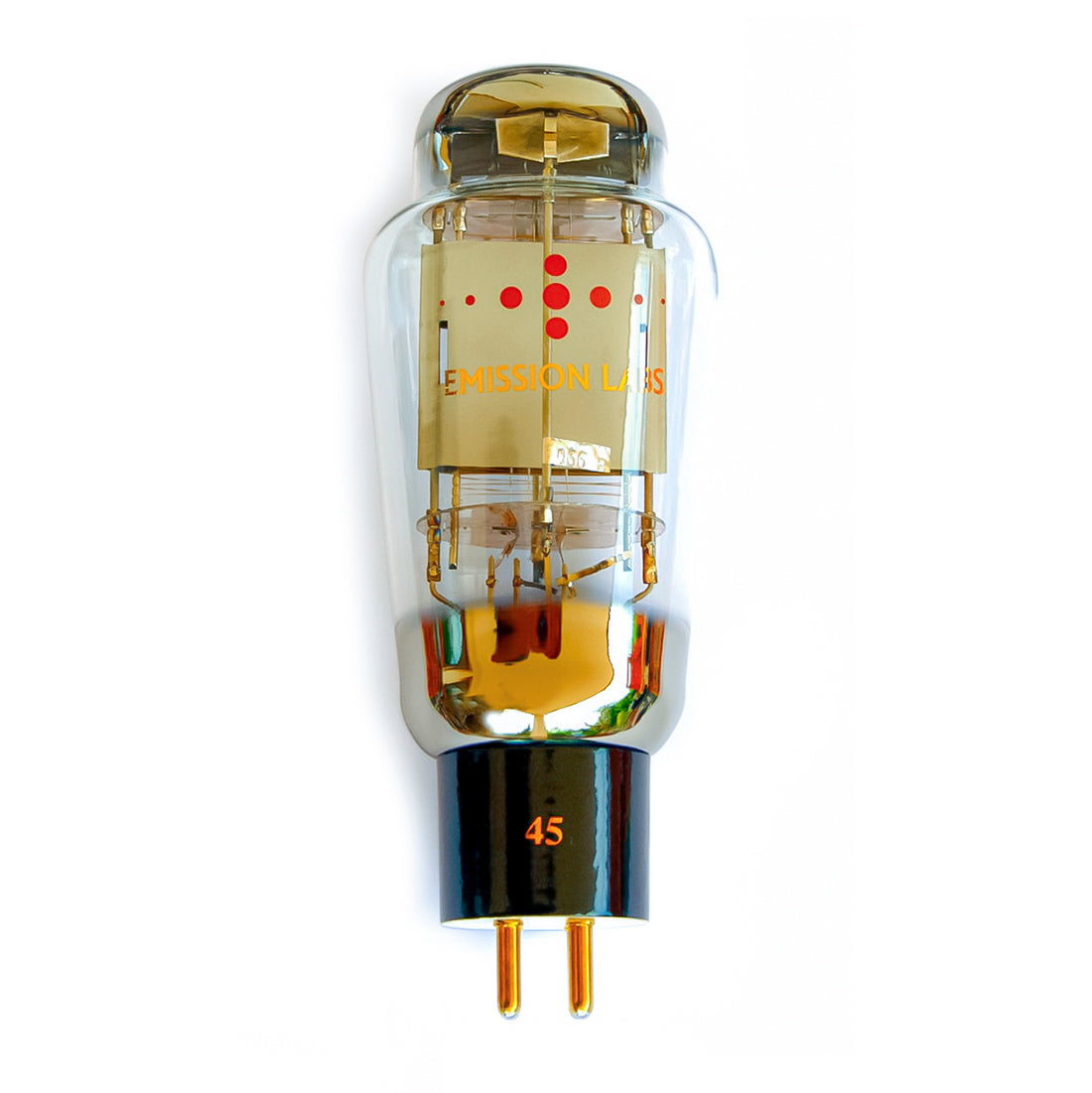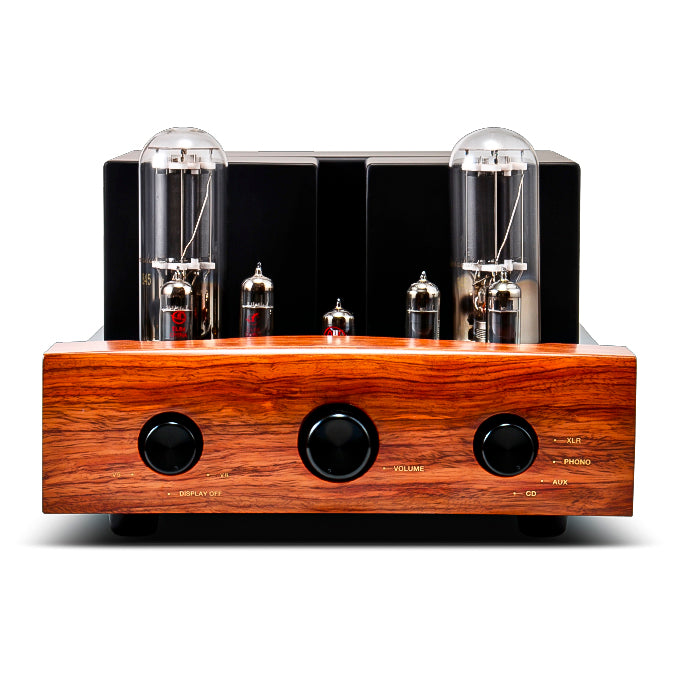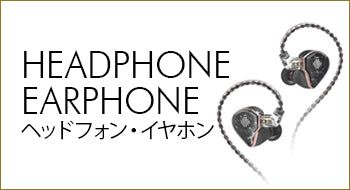It will be made to order. Delivery time takes 2-4 months.
Clear and speedy sound
The most natural side-curved diffraction horn
The FA280A has an external dimension of 806W×330H×513D, which is a large horn for a machined wooden horn. Most conventional horns have an aperture opening dimension that is narrow relative to the cut-off frequency, and most of them have a reduced frequency response at 1 KHz or less, but in this unit, the cut-off frequency is set higher than the aperture area in order to improve that part.

For the spread of the horn, the constant number of exponential horns was often used for conventional horns, but in this method, the frequency response near the cutoff tended to decrease. Therefore, by adopting a hyperbolic horn curve, we succeeded in obtaining a almost flat and wide frequency response up to the cutoff frequency of around 280 Hz. The FA280A can be used from 400 Hz, which is 1.5 times the cutoff frequency, by reviewing the horn spread and constant number.
F280A+TAD4001

F280A+JBL2445J

FA280AThe upper and lower plates are made by carving from an extremely large laminated wood block of Asada cherry blossoms, measuring 810×470×142mm. One of these plates weighs about 40 kg. In addition, the side plates are also machined from 62mm thick laminated wood, and a total of nearly 100 kg of laminated wood is required per unit. Laminated wood is manufactured by laminating raw wood into a plate-like material, so the original raw wood requires nearly 250 kg of material per horn. This is the maximum for a wooden machined horn, and because it is machined, there is almost no horn sound, and a clear reproduced sound can be obtained that is free from the horn noise that was associated with large horns.

In the F280A, laminated wood plates are used in the longitudinal direction in the front and rear directions, which have excellent sound transmission speeds. As a result, the sound is expanded, the sound is well released, and the sound is clear and full of speed. In addition, the internal separator fins are in the sound path, and they are thin and weak in strength, so there is a concern about squealing. This machine is made of very hard and durable African ebony wood, and is assembled by cutting mizo and sandwiching separator fins between the upper and lower plates, so that sufficient strength is ensured even though the separator fins are thin and sharp.

In order to follow the shape of the side-curved dayfraction horn with internal separator fins and to further improve vertical directionality, the position where it starts to open in the vertical direction is moved closer to the throat and gradually opens from close to the throat. As a result, the vertical directivity can be controlled down to lower frequencies, and as a result, the frequency response can be improved in the mid and low frequencies, resulting in a flatter and smoother frequency response.
A horn is a sound wave emitted from a driver unit that gradually increases in volume inside the sound path, increasing the volume in the process and determining the direction of the sound. Therefore, if there is an obstacle or a part that narrows down the area inside the sound path, sound reflection will occur there, causing the sound to be disturbed. Since this unit does not perform dimensional calibration at any position inside the horn, there is no disturbance of the characteristics due to reflection, and the characteristics are obtained as smooth as possible. The directivity of this unit is 90 degrees horizontally × 40 degrees vertically. If the directionality of the horn is too wide, it will be susceptible to room reflections. Also, if it is too narrow, the direct sound from the horn tends to be strong and harsh. The directivity of this unit is moderately directive, which is easy to hear in a general listening room.

The FA280A uses a throat adapter made of gunmetal with sufficient strength. The internal structure is limited to converting from a 49mm diameter round with a length of 60 mm to a square shape of 50 mm × 60 mm. Inside the throat adapter, the spread of sound waves is naturally directed to the horn, firmly supporting the connection between the driver and the horn. The gunmetal is an alloy of tin and copper, which is very strong, and because it is heavy, it is famous for its low noise and beautiful sound. The throat part alone weighs about 4 kg. In this machine, we have erected a support column on the gunmetal throat adapter and placed a setting base on both sides of the horn so that it can be supported at three points so that it is stable during setting. The sound of the horn can also change greatly depending on how it is set. This unit uses a three-point support to reduce the impact of vibration from the woofer unit on the sound and improve sound quality.
| Model | Side-curved diffraction horn |
|---|---|
| Horn cutoff frequency | 280Hz |
| Recommended Crossover | 400Hz |
| Directivity | 90 degrees horizontal, 40 degrees vertical |
| Throat diameter | 4.9cm (JBL/TAD type 2 inch) |
| Compatible Units | TAD4001, JBL2441, 2445" etc. |
| Horn Material | Asada Sakura Laminated Wood |
| External dimensions | W806×H330×D513mm (including throat adapter) |
| weight | 39kg |
| appearance | Rose-colored, furniture-like urethane paint finish (optional custom color available) |
